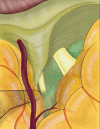Depiction of Cerebral Aneurysm Wall by Computational Fluid Dynamics (CFD) and Preoperative Illustration
- PMID: 35873850
- PMCID: PMC9298587
- DOI: 10.1055/s-0042-1749148
Depiction of Cerebral Aneurysm Wall by Computational Fluid Dynamics (CFD) and Preoperative Illustration
Abstract
Introduction Preoperative illustration is a part of an important exercise to study the configuration, direction, and presence of any perforations, and is the weakest point in the wall of the cerebral aneurysm. The same illustration is used to study the surrounding brain structures to decide the best and safe surgical approach prior to any surgical procedure. With the evolution of the aneurysm wall study and study of flow dynamic within the involved artery and its aneurysm wall using computational fluid dynamics (CFD), a better surgical plan can be formulated to improve the flow dynamics. As one of the clinical applications of CFD, we propose a study using a composite image that combines preoperative illustration and CFD, which is traditionally widely used in neurosurgery. Methods and Materials We study the use of illustrations of the unruptured cerebral aneurysm of internal carotid-posterior communicating (ICPC) artery and anterior communicating artery (AcomA) treated at our hospital. The combinations of both preoperative illustrations and CFD images by using "ipad Pro" were used. Result and Conclusion Medical illustration in the preoperative study of unruptured cerebral aneurysm with combinations of CFD and surrounding brain structures is helpful to decide the surgical approaches and successful surgical treatments.
Keywords: cerebral aneurysm; computational fluid dynamics; preoperative illustration; preoperative planning.
Asian Congress of Neurological Surgeons. This is an open access article published by Thieme under the terms of the Creative Commons Attribution-NonDerivative-NonCommercial License, permitting copying and reproduction so long as the original work is given appropriate credit. Contents may not be used for commercial purposes, or adapted, remixed, transformed or built upon. ( https://creativecommons.org/licenses/by-nc-nd/4.0/ ).
Conflict of interest statement
Conflict of Interest None declared.
Figures









References
-
- Kockro R A, Killeen T, Ayyad A. Aneurysm surgery with preoperative three-dimensional planning in a virtual reality environment: technique and outcome analysis. World Neurosurg. 2016;96:489–499. - PubMed
LinkOut - more resources
Full Text Sources
Research Materials
Miscellaneous

